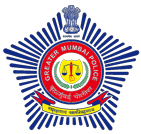Crime Branch
The main function of crime branch is Prevention, Detection and Investigation.
Units Under Crime Branch
Detection Branch
Detection Branch is overall incharge of the Detection Crime Branch. Monitoring the investigation of serious crime and formulate new strategies for combating organized crime.
Anti Extortion Cell
Special cell in Crime Branch to deal with cases connected with extortion calls of organized crime operatives.
Office address of Anti Extortion Cell :
Ground Floor, Stone Building,
Near P.N.Office, Picket Cross Road,
Kalbadevi, Mumbai - 400 001
Tel No : 022- 2262 5154
Preventive Branch
- Scrutinize the MPDA proposals, prepare detention orders and obtain CP's approval and send them back to the Police station for investigation.
- Submit report to Govt. for getting approval of detention orders.
- Production of person detained before Advisory committee and to prepare affidavits.
- Exemption of COFEPOSA orders by the state and central government.
- Main Computer Cell.
- PreveBranchntive Crime.
- Conviction Index Bureau.
- Court Cel.
- Missing Persons Bureau.
- Modus Operandi Bureau.
- Criminal Record Bureau.
- Finger Print Bureau.
- Scheduled Castes Scheduled Tribes ATROCITY-CELL (S.C.T.S.C.).
Modus Operandi Bureau.
This branch keeps a records of arrested and convicted accused. The records are classified on the basis of modus - operandi (the mode of operations, the particular way of committing a crime ) of criminals.
The photograph of criminals are shown to the victim and witnesses.
If any criminal is not in the records his sketch is made with the help of police artist and Computer Branch.
Office address of Modus Operandi Bureau :
Compound of the office of the Hon. Commissioner Of Police,
Annex-I Building, 1st Floor,
D.N. Road, Mumbai - 400 001.
Tel No : 022- 2262 5154 Ext. 222
Missing Persons Bureau.
This is the centralized branch situated in The Compound Of The Office Of Commissioner of Police, Mumbai. This branch deals with the cases of missing people, irrespective of the place from where the person is missing in the country. The officers and staff attached to this branch helps the relatives of missing person to trace him or her. Although endeavor of this branch to trace all missing persons, there is more emphasis laid on missing children and women.
The efforts to trace missing persons are mainly on the following lines:
Publish the description in a Police Notice and flash a wireless message Issue a circular carrying a photograph and description of the missing person to all Police Stations A photograph of the missing person is sent to Doordarshan to telecast it (A photograph of 10" x 12" size) Field enquiries are made for trace them at Guest Houses, Hospitals, Railway Stations, Air-port, Bus stands, Cinema Houses, Parks, Gardens etc. Enquiries are made at Railway Missing Persons Bureau With the consent of the relatives of the missing person, photographs with description of the missing person are published in News Papers, local TV channels and also on the Internet.
This branch functions 24 hrs and members of the Public are free to seek the assistance of this branch to trace any Missing Person.
Missing Persons Bureau Office Address :
1st Floor, Traffic Police Hostel,
Behind Traffic PoliceTraining Centre Building,
Byculla, Mumbai 400 027
Phone No : 022-23725315
Cyber CrimeBranch
Cyber Crime Branch is overall in-charge of Cyber Police Station, BKC. CYBER POLICE STATION, BKC - This branch deals with the investigation of website hacking, cyber stalking, cyber pornography, e-mail, credit card crime, software piracy, on-line fraud and internet crime(Click here to read more)
Anti Narcotics Cell Branch
Anti Narcotics Cell Branch initiates action against persons who manufacture, transport, possesses, sale narcotics drugs, psychotropic substance like Heroin, Morphine, Ganja, Charas, Hashish oil, Cocaine, Mephedrone, LSD, Ketamine, Amphetamine and others substances under NDPS Act 1985.(Click here to read more)
Crime Against Women Branch
Crime Against Women Branch is overall in-charge of C.A.W. Units (I,II) and Counselling Cell.
(Click here to read more)

